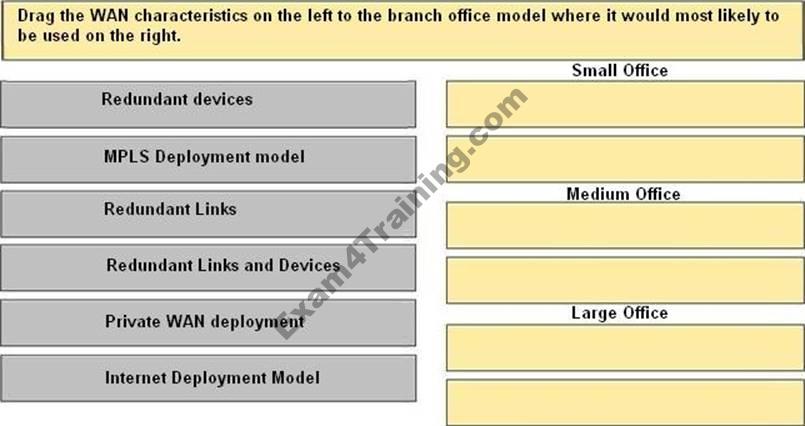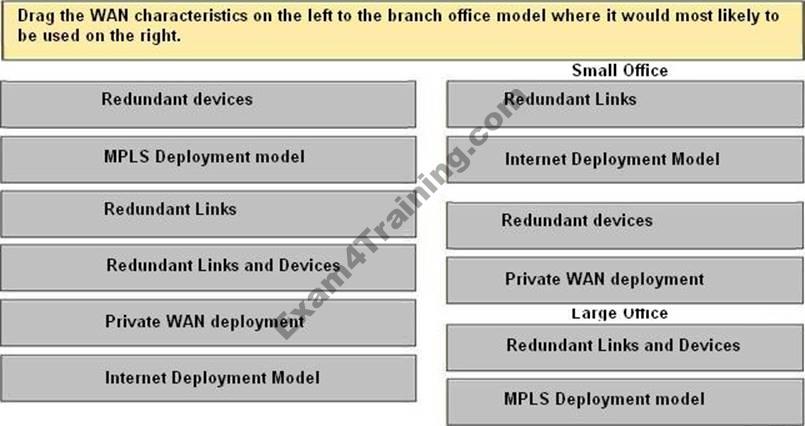- All Exams Instant Download
Drag the WAN characteristics on the left to the branch office model where it would most likely to be used on the right
DRAG DROP
Drag the WAN characteristics on the left to the branch office model where it would most likely to be used on the right.

Answer: 
Explanation:
Small Branch Design
The small branch design is recommended for branch offices that do not require hardware redundancy and that have a small user base supporting up to 50 users. This profile consists of an access router providing WAN services and connections for the LAN services.
The Layer 3 WAN services are based on the WAN and Internet deployment model. A T1 is used for the primary link, and an ADSL secondary link is used for backup. Other network fundamentals are supported, such as EIGRP, floating static routes, and QoS for bandwidth protection.
Medium Branch Design
The medium branch design is recommended for branch offices of 50 to 100 users, which is similar to the small branch but with an additional access router in the WAN edge (slightly larger) allowing for redundancy services.
Large Branch Design
The large branch design is the largest of the branch profiles, supporting between 100 and 1000 users. This design profile is similar to the medium branch design in that it also provides dual access routers in the WAN edge. In addition, dual Adaptive Security Appliances (ASA) are used for stateful firewall filtering, and dual distribution switches provide the multilayer switching component. The WAN services use an MPLS deployment model with dual WAN links into the WAN cloud.
Cisco Press CCDA 640-864 Official Certification Guide Fourth Edition, Chapter 7
Latest 200-310 Dumps Valid Version with 644 Q&As
Latest And Valid Q&A | Instant Download | Once Fail, Full Refund
Subscribe
Login
0 Comments
Inline Feedbacks
View all comments

